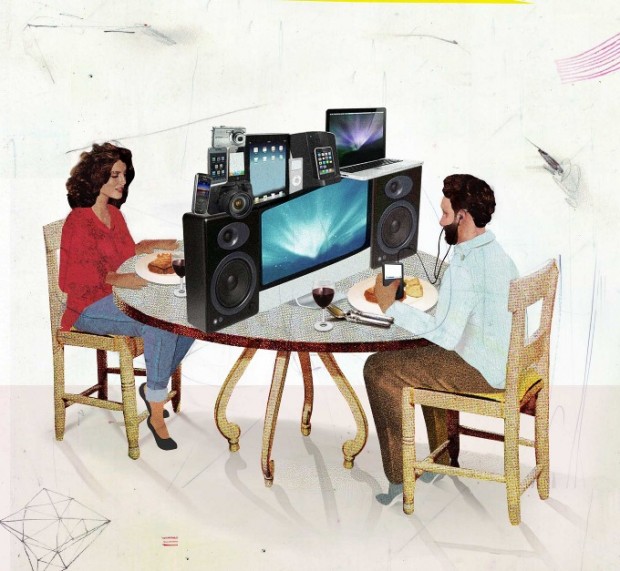An iconographic and text archive related to communication, technology and art.
☛ Kathryn Macnaughton: “Untitled” for the November issue of Grip Magazine, hand drawing and digital collage, October 2, 2012. © Kathryn Macnaughton.
Kathryn Macnaughton is a Canadian illustrator and graphic designer. She currently lives and works in Toronto. Even though her final work is often digital, her creative process involves a lot of creation done by hand. She will draw figures, typography and do some coloring by hand before scanning everything. After that, it’s all a matter of producing the final illustration as a digital collage made with computer softwares. The new book covers she designed to illustrate Penguin Publishing UK’s classic novels also worth a look: see them all in large format over at FILE Magazine.
To see more of her work one can browse her official website, as well as follow her on Tumblr, Twitter and Facebook.
I first found out about Kathryn Macnaughton’s work via BLDGWLF
• • •
I found this to be another excellent illustration for the following quote found in The Human Condition by Hannah Arendt:
To live together in the world means essentially that a world of things is between those who have it in common, as a table is located between those who sit around it; the world, like every in-between, relates and separates men at the same time. (Second Edition, Chicago: The University of Chicago Press, 1958, p. 52)
I used this quote before in relation to Martin Parr’s photographic series Bored Couples: see Living Together: “Bored Couples” by Martin Parr, 1993.
The fact that “communication media cause isolation”, as Adorno and Horkheimer called it back in 1947, is something that has somehow become common knowledge. But the consequences of this paradoxical situation have yet to be fully understood. Charlie Gere’s latest book Community without Community in Digital Culture appears to be another attempt at that task (Charlie Gere is Professor of Media Theory and History at Lancaster University):
Against the prevailing presumptions that new technologies involve greater contact, relationality and community, Community without Community in Digital Culture proposes that they exemplify the gap inherent in touch, the ‘inconceivable, small, “infinitesimal difference”’ that separates us from each other in time and space. In this, such technologies are part of the history of the Death of God, the loss of an overarching metaphysical framework which would bind us together in some form of relation or communion. Far from producing new kinds of community and relationality, these technologies effect non-relations, and non-communities, community without community. (Palgrave Macmillan, 2012, p. 1)
- By Philippe Theophanidis
- on
- ― Published in Art, Communication, Illustration, Technology
- Tagged: apparatus, Arendt, community, couple, screen, séparation, table, together, world

